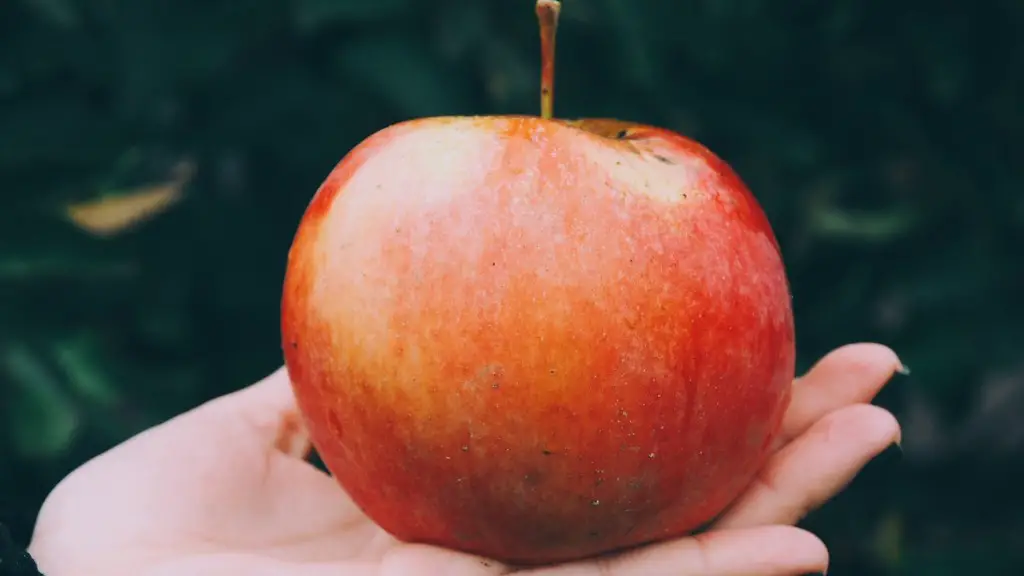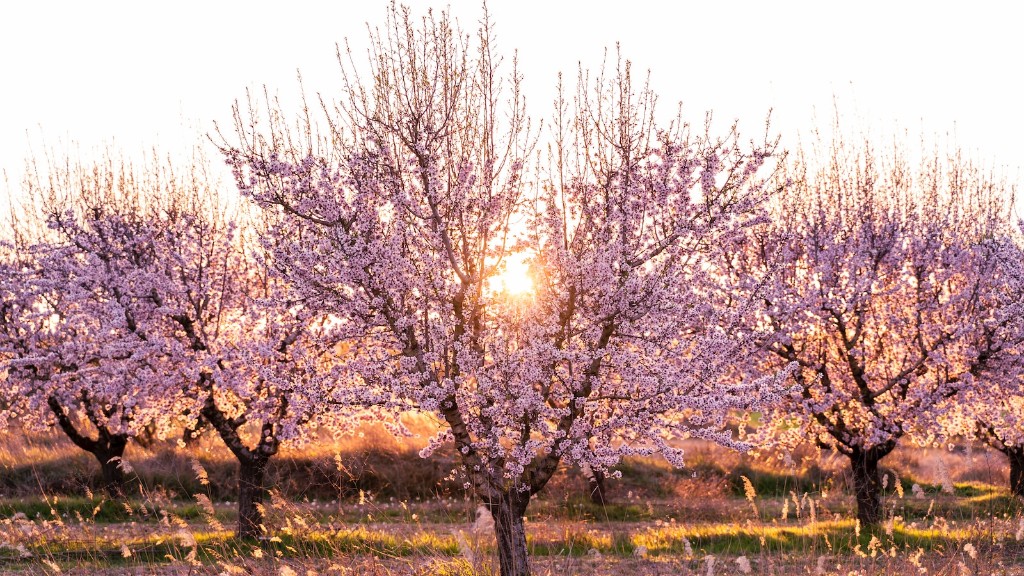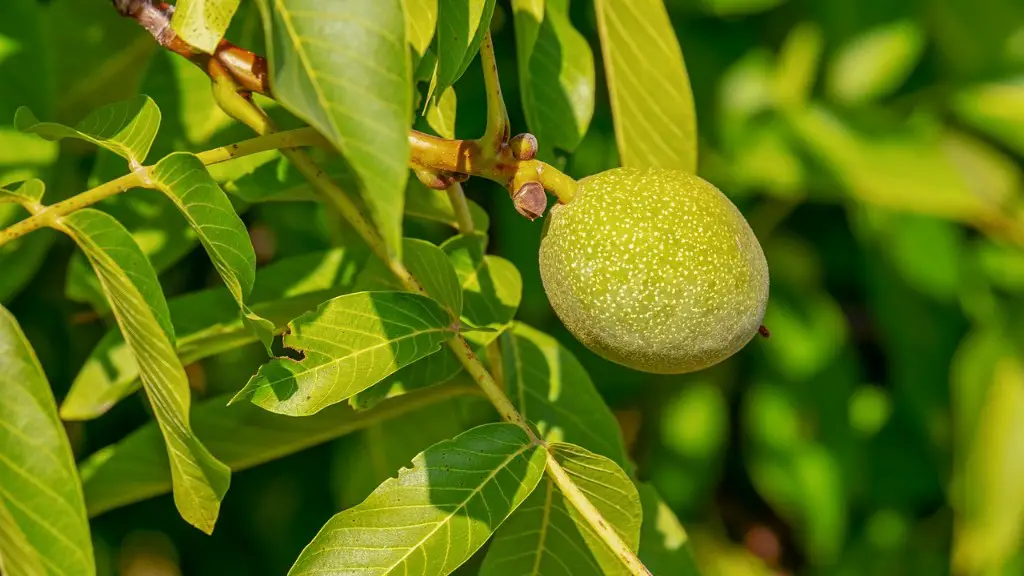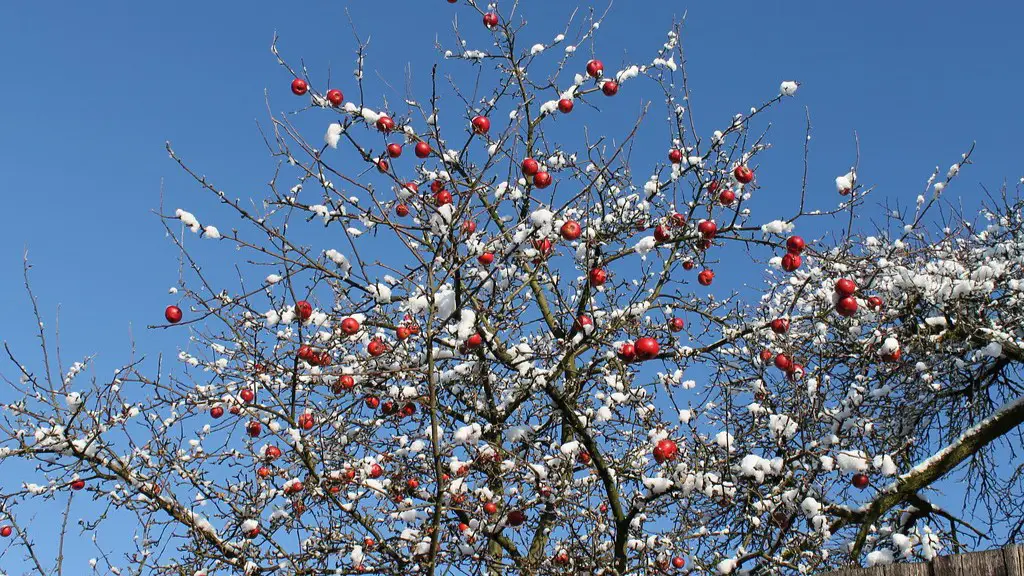Honeycrisp apple trees aren’t just delicious and sweet – they also offer an ideal backdrop for a variety of garden plants. From visually attractive perennials to helpful companion plants, there are many options when it comes to what to plant with honeycrisp apple trees. Consider these points when deciding on the best plants for your garden.
Firstly, perennials provide a colorful pop of color in the fall and winter months. Suitable choices might include daffodils, crocuses and daylilies. These plants will sprout up every year and provide a relaxing atmosphere throughout the seasons. Alternatively, you could plant some shrubs to add height and interest to your garden.
If you’re looking for a bit more protection for your honeycrisp apple trees, consider companion planting. This will pair your trees with other plants that can help to keep pests away, limit disease damage and even boost the health of your trees. Planting certain herbs and vegetables nearby, such as garlic and tomatoes, can act as a natural insect repellent. Additionally, many herbs such as thyme, oregano and basil not only help with pest control but will also add plenty of flavor to your meals.
Additionally, you could grow some clover as ground cover beneath your trees. This sustainable plant can help to reduce soil erosion, increase the water and nutrient uptake of your apple trees, and even provide a helpful habitat for beneficial insects. Aside from clover, you might also consider planting some flowers and ornamental grasses, such as black-eyed susans and muhly grass. These will add a soft, beautiful touch to your garden.
When planting with your honeycrisp apple trees, make sure that they are spaced at least 20 feet apart. This will give each tree plenty of room to spread out and absorb the most sunlight, allowing them to grow and develop. Finally, make sure you cultivate your soil before planting, as this will give your plants the best chance of success.
Growing Tomatoes with Honeycrisp Apple Trees
Tomatoes are a perfect companion plant to use with honeycrisp apple trees. Not only will they attract beneficial insects and help to keep pests from invading, but they also provide a wide variety of nutrients that will help to boost the health of your apple trees. Plant tomatoes at least four feet away from your trees to give plenty of room for both to grow. When picking your tomatoes, make sure you choose ones that are disease-resistant and either self-pollinating or determinate varieties to ensure a steady harvest.
To start planting your tomatoes, choose an area with plenty of sun exposure. Tomatoes will need at least 6-10 hours of full sunlight each day and they may need more if you live in an intense climate. Additionally, make sure the soil around your apple trees is fertile, with an ideal pH range of between 6-6.5 for optimal growth. If the soil isn’t quite up to par, you could add small amounts of compost to help improve its quality. Make sure to water your tomatoes consistently for healthier and more abundant harvests during harvest season.
Another way to help your tomatoes thrive is to use mulch. This will help to keep your soil warm and moist and provide an extra layer of insulation. You can use organic material such as bark, leaves, or grass clippings, or you could opt for synthetic materials such as nylon or landscape fabric. Whichever type of mulch you choose, make sure it doesn’t come into direct contact with your plants.
Finally, consider staking your tomatoes. This will help to keep the branches off the ground and support the heavier fruits so they don’t break off. You can use metal cages, wooden or metal stakes, or even natural options such as bamboo poles or brown garden twine. Be sure to tie the plants loosely as too tight ties to the stake will strangle the stems.
Planting Herbs with Honeycrisp Apple Trees
Herbs can be a great addition to any garden, especially when planted alongside honeycrisp apple trees. Many herbs, such as lavender and rosemary, not only act as natural pest repellents but will also add flavor and aroma to your dishes. Herbs are relatively low-maintenance and can grow in a variety of soil types, making them ideal for any garden. When selecting herbs for your garden, look for ones that are well-suited to your climate, as some might not survive in extreme cold or heat.
Just like tomatoes, consider your sunlight needs when selecting a place for your herbs. Most culinary herbs need direct sunlight to grow properly – anywhere between 6-8 hours per day will be preferable. You can also mulch your herbs to keep the soil cool and moist without taking away too much of the nutrients. However, be sure to keep the mulch from coming into contact with the herb’s leaves and stems.
To maximize your herb’s yields, you can use companion planting, meaning pairing your herbs alongside other plants to benefit each other. Planting certain herbs together can actually enhance their flavor, causing pleasant aromas to waft through the garden throughout the summer. Additionally, herbs prefer a soil that’s slightly acidic or neutral, rather than alkaline, so add some peat moss or limestone chips to the soil before planting.
To ensure the health and growth of your herbs, water them regularly – but avoid overwatering, as this can lead to root rot. Finally, you should remove dead or dying leaves and stems regularly to help your plants stay healthy and full of flavor.
Incorporating Flowers with Honeycrisp Apple Trees
Adding flowers to your garden with your honeycrisp apple trees will add more color and beauty, as well as increase your garden’s productivity. Many flowers provide a steady supply of food for beneficial insects, keeping away pests from your trees. Additionally, flowers will also offer additional protection for apple trees from weather-related damages such as frost, wind, and hail.
When selecting flowers to plant with your honeycrisp apple trees, make sure to pick ones that bloom during the same season. This will create an explosion of colors throughout your garden, giving it a unique and eye-catching look. Also, focus on flowers that will attract beneficial insects such as honeybees and ladybugs, as these can help to protect your trees from certain pests. Examples of great-looking, beneficial flowers could include cosmos, yarrow, and bachelor buttons.
When planting your flowers, remember to give them plenty of sunlight. Most flowers require around 8 hours of direct sunlight each day, so it’s best to pick an area that fits this criteria. Additionally, make sure the soil is well-draining, as some flowers cannot survive in wet or damp conditions. To help with drainage, you could add humus or peat moss to the soil beforehand.
Also, make sure to water your flowers frequently. Consistent watering is the key to vibrant, healthy flowers that will bloom for months on end. Applying a fertilizer in spring can also help with flowering and overall health of your plants. Finally, you should consider deadheading any blooms that are wilting, as this can encourage continued flowering within the same plant.
Planting Shrubs with Honeycrisp Apple Trees
Shrubs can provide many benefits to any garden, and when paired with honeycrisp apple trees, they can make for a truly gorgeous outdoor space. Not only will they provide additional protection for your trees, but they also help to break the wind and create additional areas for birds to nest. When selecting shrubs for your garden, make sure to choose ones that are compatible with your local climate.
Shrubs thrive in a variety of soil types, though they’d prefer soil with a pH level between 6.0 and 6.5, with a good amount of organic matter. Before planting your shrubs, always make sure to cultivate the soil to give your plants the best chance of success. You could also choose to add a fertilizer to the soil to give your plants a nutrient boost.
Make sure to also select an area that isn’t too shady. Most shrubs require at least 6 hours of full sun each day, however some will need more than this. When planting, create small mounds within the soil to help with drainage, then place the shrubs at least 8-10 feet away from each other and 10-15 feet away from your honeycrisp apple trees. Make sure to water your shrubs deeply, as shrubs cannot survive on sporadic sprinkles.
Finally, for more aesthetically pleasing results, prune back any stray branches and dead leaves. However, make sure to avoid over-pruning as this can damage your shrubs. You can also apply a layer of mulch around the base of the plant, as this will help to protect the roots and soil from excessive moisture loss.





